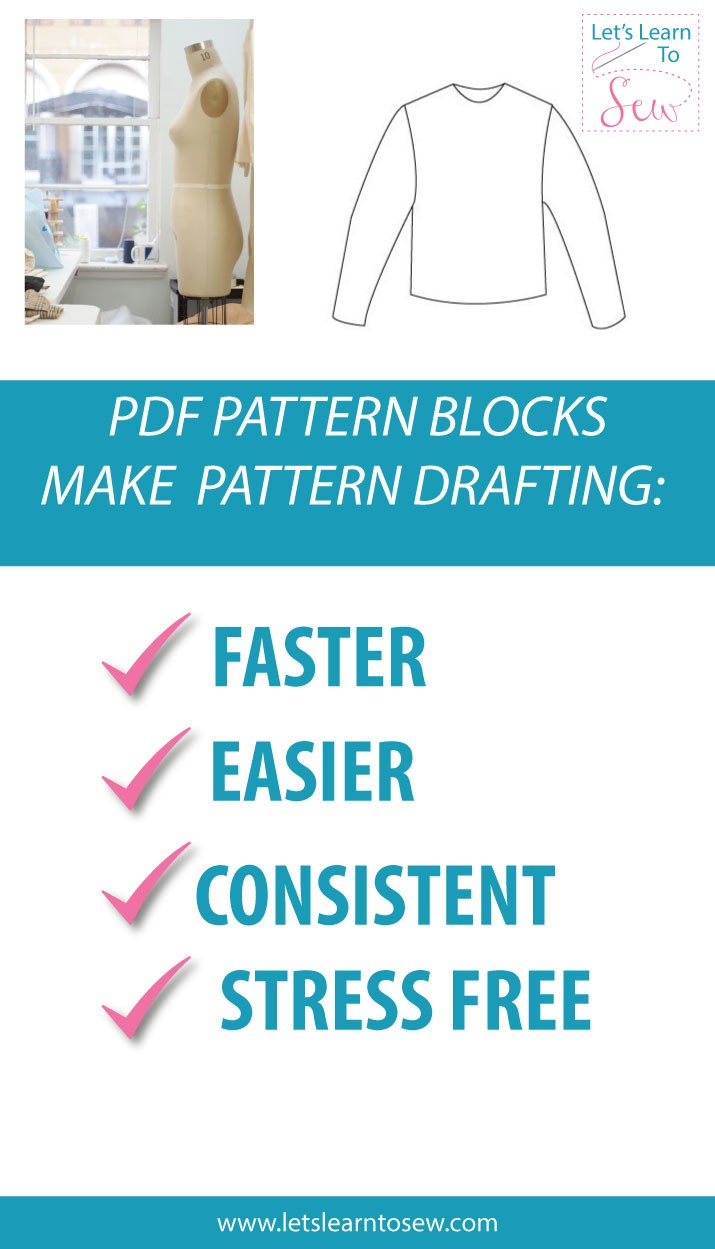Pattern markings, a quick look at the most common terms and symbols.
The markings used for commercial sewing and industry patterns are somewhat similar but somewhat different. In addition, the industry uses a few fancy tools that make creating a pattern from scratch a whole lot easier!
One of the most apparent differences between professional patterns and home sewing patterns is the paper used. I very much prefer the kraft paper or manila (oak tag) paper to the flimsy tissue paper patterns. My advice would be that if you are going to alter home sewing patterns to fit your body (which is a fantastic idea), you should eventually transfer the pattern to nice paper! Another noticeable difference is the way professional patterns mark notches and bust points. I’ll explain a little further down below. So, read on!
Dart Leg Two lines that come together at a specific point to create a dart. Darts are triangular wedge-shaped markings used to control the fit of a garment. Note the notches and punch holes at the base and points of the dart legs. Notching in these locations will make it easier to transfer pattern markings.
Bust Point A designated place marked on the front pattern is generally used as a pivot point and indicator of where to place darts. A screw punch is ideal since it works well for pivoting. However, punching a hole with an awl and drawing a circle around it is second best. Lastly, a circle w/ a hash mark is commonly used for commercial sewing patterns.
Notch Symbols, or markings are used on a pattern to indicate cutting lines, joining points, hems, dart legs, etc. IMPORTANT: Single notches always refer to the front of a pattern and a double notch always refers to the back of a pattern. A pattern notcher is an ideal tool for the job. However, a single line or triangle will do the job.
Grain Indicates the direction, using a straight line and arrows; the pattern is to be placed and cut on fabric.
Cut on Fold Indicates where the fold line is located on a particular pattern piece. This will show you where to position your pattern on the fabric when cutting. More often than not, only half of the pattern is created.
Tucks + Gathers Indicates two points that are to be brought together when constructing a tuck or gather.
Pleats Similarly, pleat markings indicate where to construct a pleat using solid and dotted lines, accompanied by an arrow showing the direction the pleat should fold.
Buttonholes Show where the buttonholes should be placed.
Pocket placement Shows where to place a pocket.





Leave a Reply